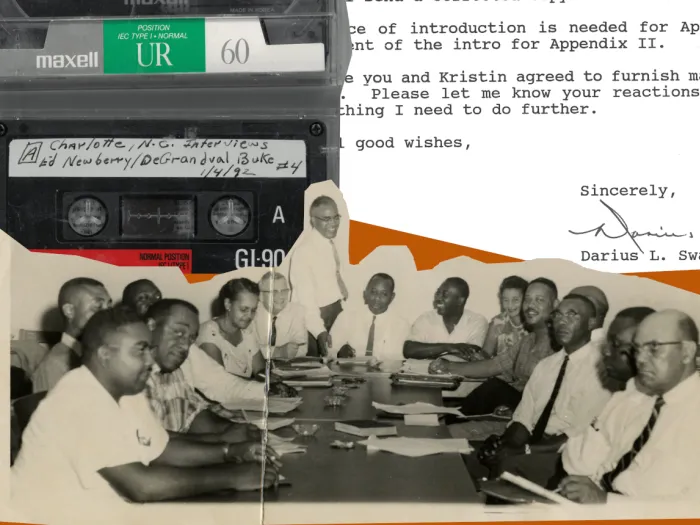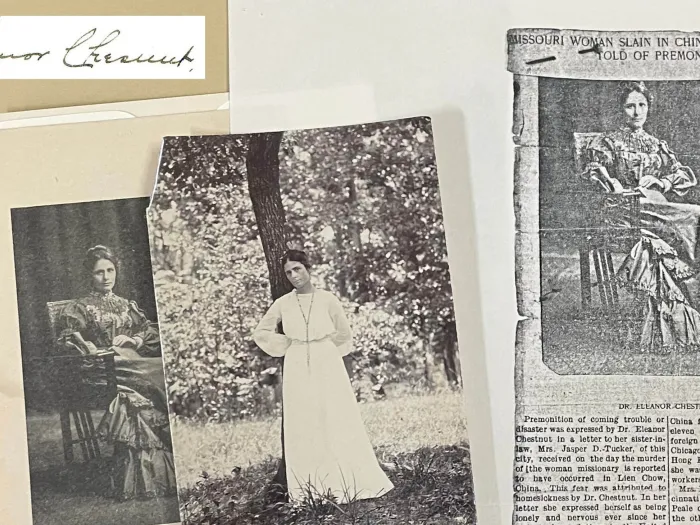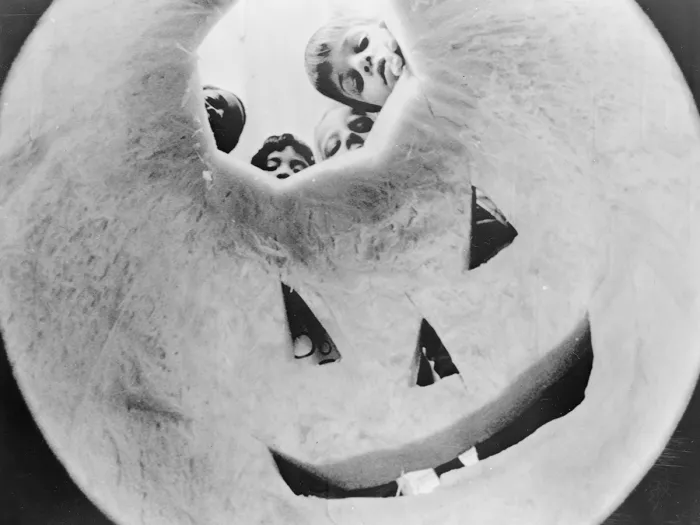Memorial Service for Armenian Catholicos, 1907. [Pearl ID: 139161].
A woman floats in Lake Urmia. An American doctor poses next to a Kurdish leader. A group of Assyrian women gather in a home in Urmia.
This spring, descendants of the Shedd family prepared boxes of records and delivered them to the Presbyterian Historical Society archives. The records, which were promptly added to the Society’s five cubic feet of Shedd family papers, included an album of photographs by Louise Wilbur Shedd.
In 1859, John Haskell Shedd arrived in the isolated and mountainous city of Urmia. There he joined a small group of Presbyterian missionaries dispatched to the northwest corner of Persia by the American Board of Commissioners for Foreign Missions and tasked with reaching out to the largely Christian Assyrians in the region.
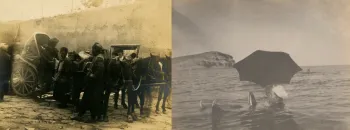
Left: John Haskell Shedd and Sarah Jane Dawes Shedd return to Urmia after furlough, 1890s. [Pearl ID: 139122]. Right: Lake Urmia, from Louise Wilbur Shedd photograph album, Iran, circa 1899. [Pearl ID: 359159].
From 1859 to 1918, John Haskell Shedd and his son William Ambrose Shedd, served as missionaries in Urmia. The father and son’s presence in the city coincided with a critical and turbulent period in the country’s history.
In 1880, Kurdish forces invaded the region resulting in thousands of deaths and a new humanitarian crisis. Under John Haskell Shedd’s leadership, missionaries distributed essential supplies and acted as mediators with Kurdish forces. The latter proved to be particularly important because it spurred the U.S. government to formally establish a diplomatic relationship with Persia. Despite the hardships caused by the 1880 invasion, Shedd administered the founding and construction of a seminary and hospital in Urmia—which continue to exist as historic landmarks in the city, a tribute to their civic and cultural significance.
In many ways, William Ambrose Shedd followed the path of his father. Born in Persia in 1865, William Ambrose studied at Princeton Theological Seminary and returned to Urmia in 1892 as a missionary under the Presbyterian Church in the U.S.A. Board of Foreign Missions. Like his father, William Ambrose Shedd’s mission service coincided with geopolitical tumult. During World War I, Shedd sheltered Assyrian refugees who sought protection from the Ottoman Empire.
The Shedds service to the people of Urmia extends beyond their humanitarian work and reflects a deep familiarity with the region. Their notes and manuscripts, which can be reviewed at the Presbyterian Historical Society, provide insights into the lives of the people who lived in the geographically isolated mountains in the Northwest corner of Persia. But it was another Shedd, William Ambrose Shedd’s second wife Louise Wilbur Shedd, whose photographs offer invaluable documentation of the Assyrians, Armenians, and Jewish people of Persia—groups who would be persecuted and displaced during World War I.
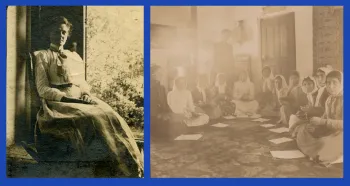
Left: Louise Wilbur Shedd, 1910. [Pearl ID:139091]. Right: Assyrian women gather, from Louise Wilbur Shedd photograph album, Iran, circa 1899. [Pearl ID: 359159].
Louise Wilbur Shedd’s access to photography equipment, something most missionaries would not have carried through the mountains of West Persia, along with being a woman in the field gave her access and the opportunity to photograph families, women, and children in their homes. Her intimate portraits, available through the Presbyterian Historical Society’s digital collections, along with the notes and observations of John Haskell and William Ambrose Shedd, portray a place and time where religious and ethnic groups lived side-by-side, before global upheaval and war set the wheels of displacement in motion.
View the Shedd Family Papers in Pearl Digital Collections: digital.history.pcusa.org/shedd
Access the full Spring 2024 edition of Presbyterian Heritage: history.pcusa.org/ph
You may freely reuse and distribute this article in its entirety for non-commercial purposes in any medium. Please include author attribution, photography credits, and a link to the original article. This work is licensed under a Creative Commons Attribution-NonCommercial-NoDeratives 4.0 International License.

